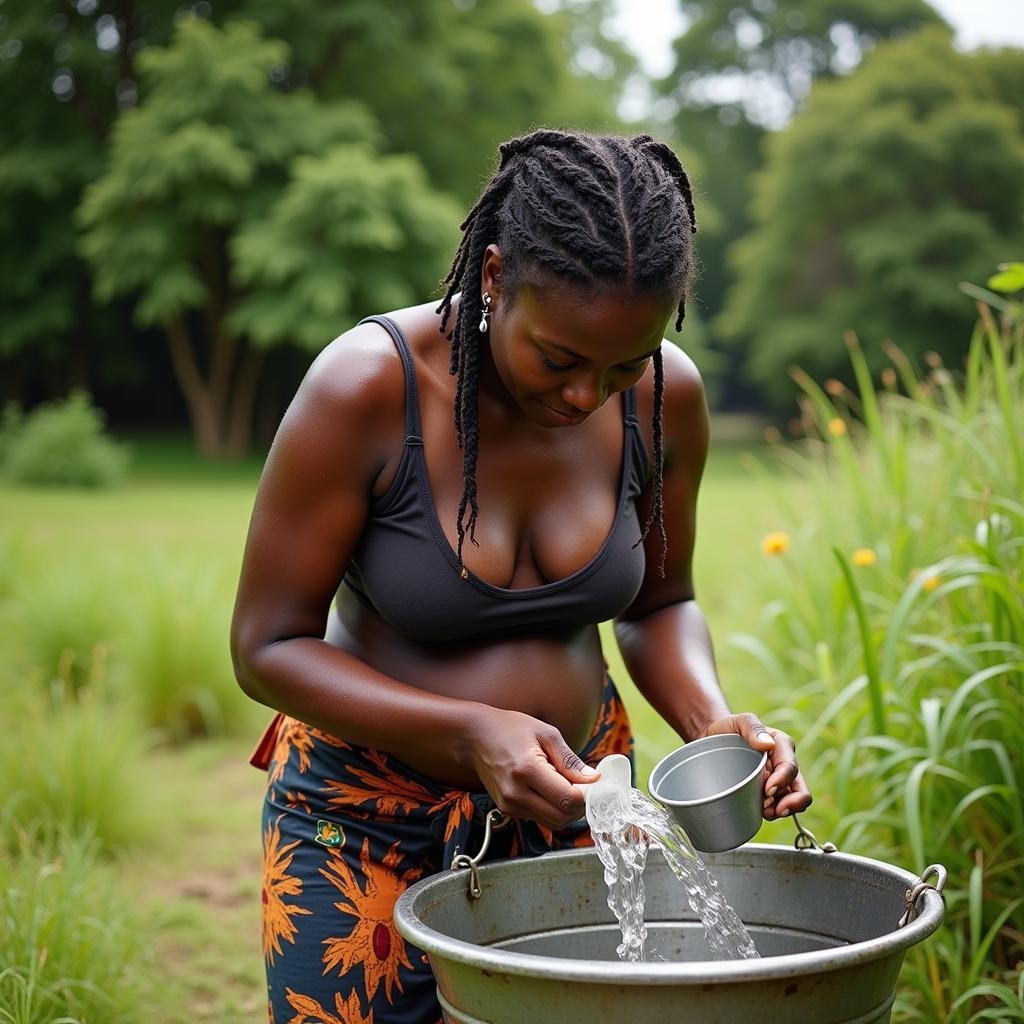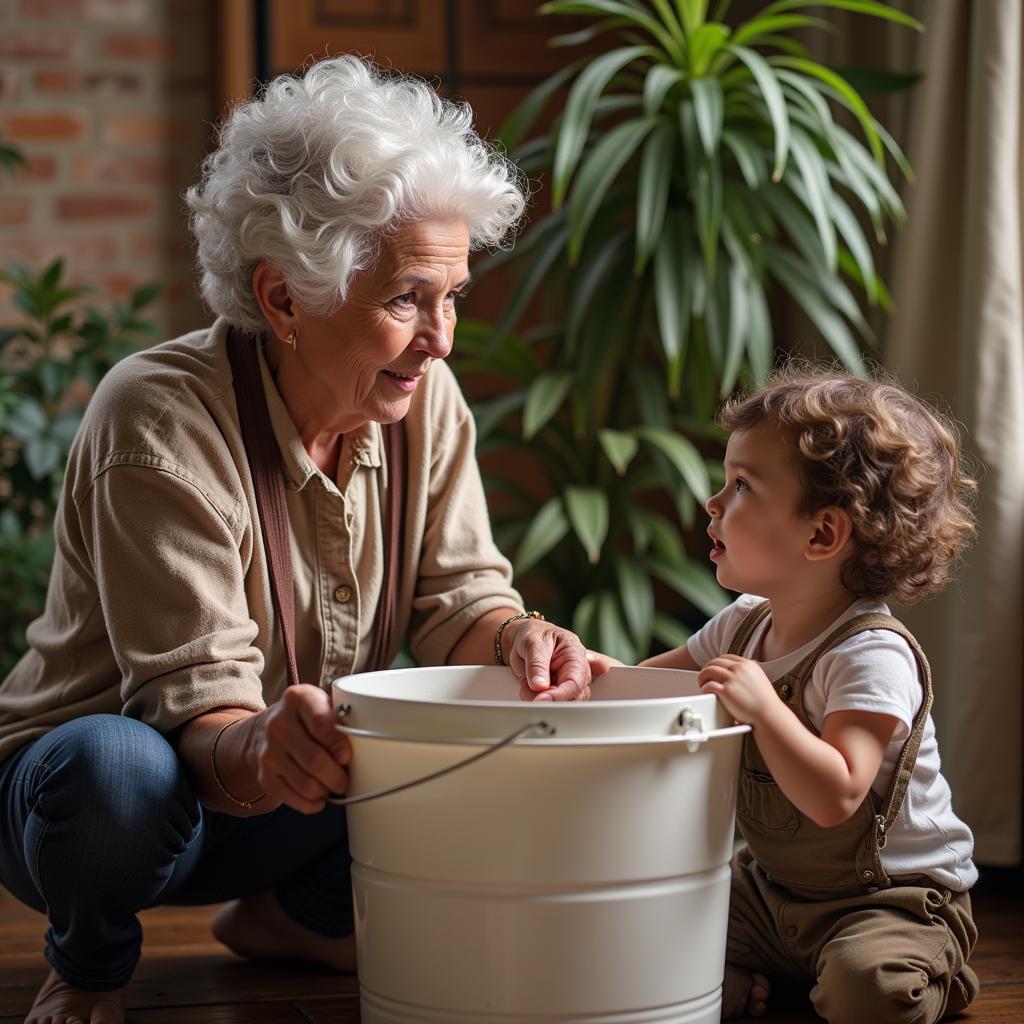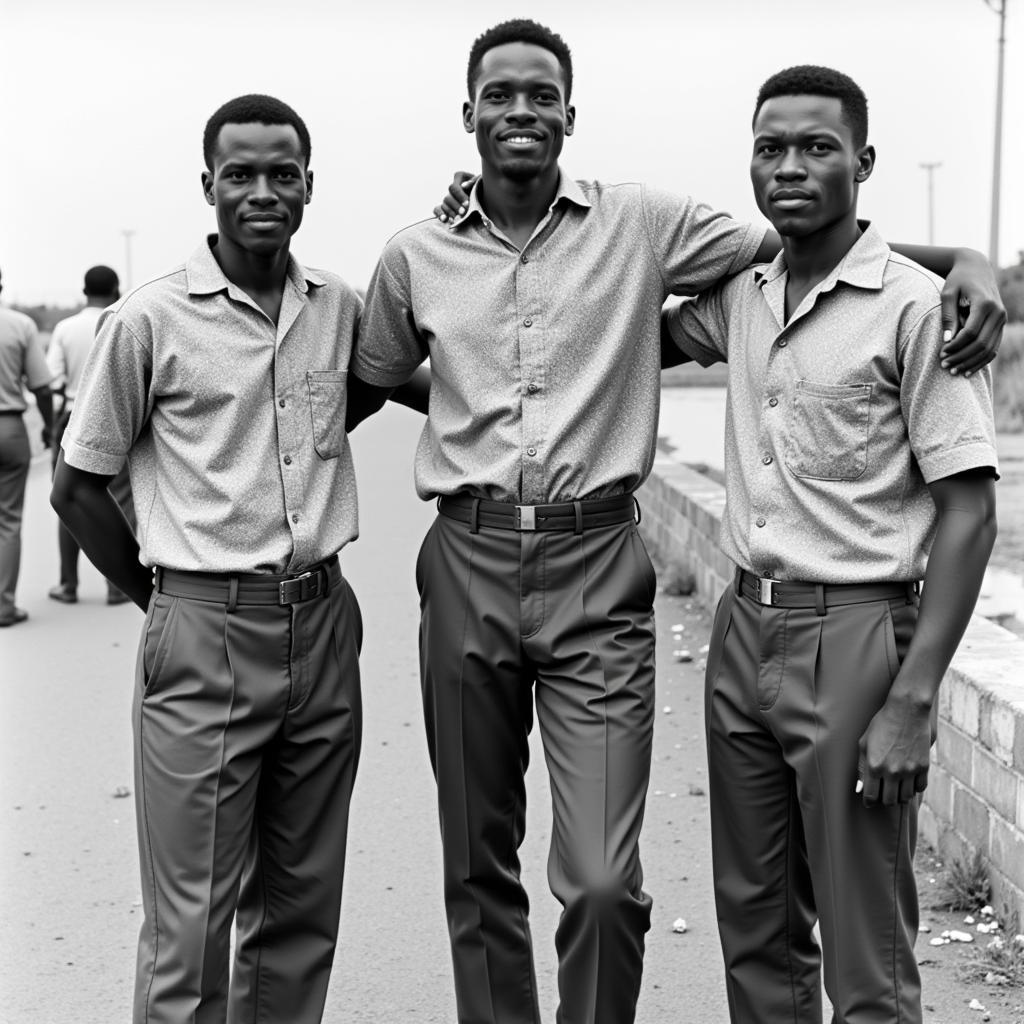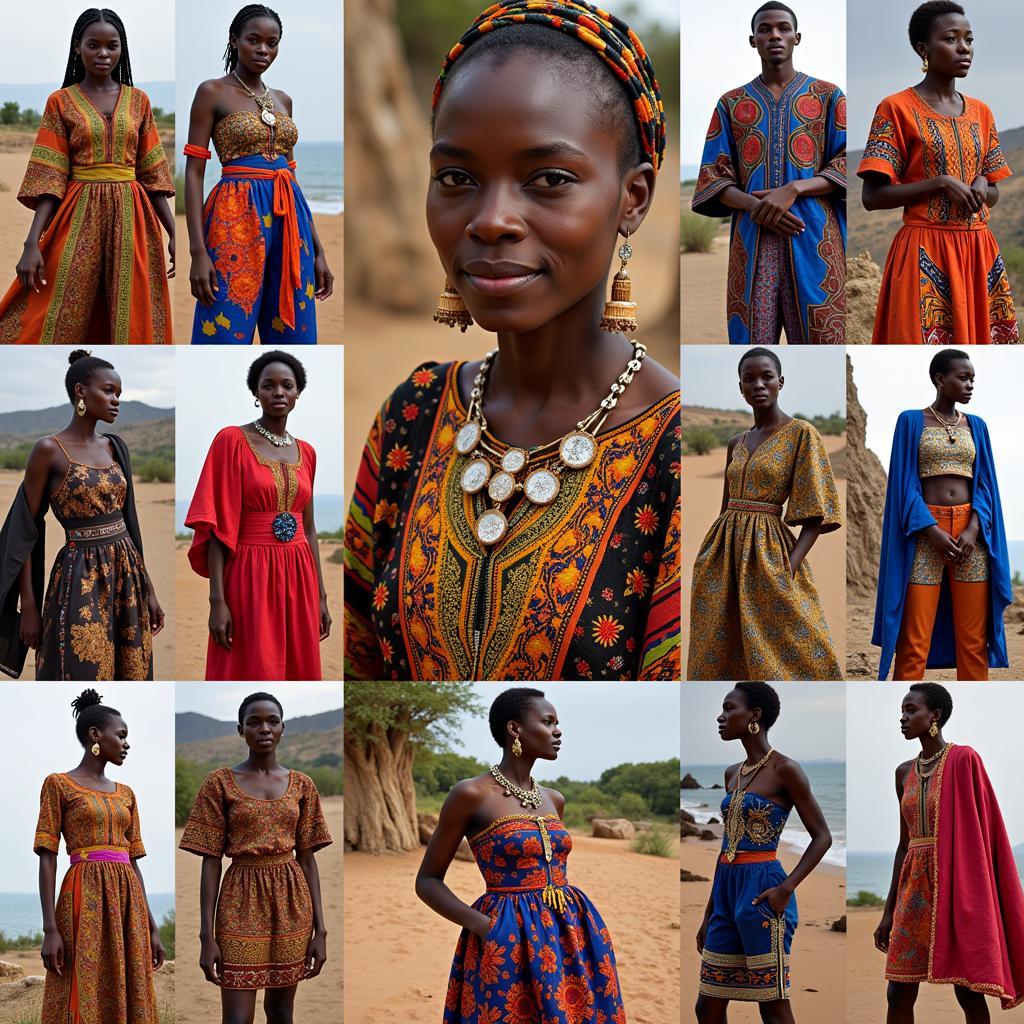The African Bucket Bath: A Refreshing Cultural Experience
The African Bucket Bath, a simple yet profound ritual, is more than just a way to cleanse the body; it’s a deeply ingrained cultural practice across many parts of the continent. It’s a testament to resourcefulness, community, and a connection to tradition that transcends generations. From bustling city centers to tranquil rural villages, the bucket bath offers a unique glimpse into the daily lives and values of many African communities.
Understanding the African Bucket Bath
The bucket bath, also known as a “sponge bath,” is exactly what it sounds like: bathing using water drawn from a bucket or basin. While plumbing and running water are becoming increasingly common, the bucket bath remains a significant part of daily life for many, often out of necessity, but also due to cultural preference. It’s a practice born from practicality, thriving in areas where water resources might be limited or where access to modern plumbing is scarce. But beyond the practicalities, it embodies a sense of community, mindfulness, and a respect for water as a precious resource.
The Cultural Significance of the Bucket Bath
The bucket bath is more than just a routine; it’s a ritual often imbued with social and cultural significance. In some communities, it’s a time for quiet reflection, a moment of personal peace amidst a busy day. In others, it can be a communal activity, shared among family members or friends, fostering connection and laughter. Children often learn the art of the bucket bath from elders, passing down traditions and values from one generation to the next. It’s a time for sharing stories, strengthening bonds, and reinforcing cultural identity.
How to Experience an Authentic African Bucket Bath
Curious about trying an African bucket bath yourself? It’s a surprisingly simple yet rewarding experience. Here’s a step-by-step guide to help you understand the process:
- Gather your materials: You’ll need a bucket or basin of warm water, a smaller container for scooping, soap, a sponge or washcloth, and a towel.
- Find a private space: While sometimes communal, privacy is generally preferred. This could be a bathroom, a designated bathing area, or even outdoors with a privacy screen.
- Warm the water: The water should be comfortably warm, not scalding hot.
- Begin the ritual: Using the smaller container, gently pour water over your body, starting with your head and working your way down.
- Lather and rinse: Apply soap to your sponge or washcloth and cleanse your body. Then, rinse thoroughly using the scooped water.
- Dry and dress: Towel dry and dress in clean clothes.
 African Woman Taking a Bucket Bath Outdoors
African Woman Taking a Bucket Bath Outdoors
This process emphasizes mindful water usage, a key aspect of the African bucket bath experience. It’s about appreciating the resource and using it efficiently.
Beyond the Basics: Tips for an Enhanced Bucket Bath
While the basic process is straightforward, there are ways to enhance the experience and make it even more enjoyable. Adding herbs or essential oils to the water can create a fragrant and therapeutic experience. Some people also use traditional African black soap, known for its cleansing and moisturizing properties. Remember, the African bucket bath is adaptable and can be personalized to your preferences.
The Future of the Bucket Bath
While access to modern plumbing is increasing across Africa, the bucket bath is likely to remain a significant cultural practice. It’s a tradition deeply woven into the fabric of many communities, representing not only a practical solution but also a connection to heritage and a mindful approach to water conservation.
What is the purpose of a bucket bath?
The purpose of a bucket bath is to cleanse the body using a limited amount of water, often in areas where running water is not readily available. It’s a practical solution with deep cultural significance.
 African Child Learning Bucket Bath from Grandmother
African Child Learning Bucket Bath from Grandmother
Conclusion
The African bucket bath is a fascinating cultural experience that offers a glimpse into the resourcefulness, traditions, and values of many African communities. It’s a practice that highlights the importance of water conservation, community, and the beauty of simplicity. By understanding and appreciating this unique ritual, we can gain a deeper appreciation for the rich cultural tapestry of Africa. So, next time you have the opportunity, consider trying an African bucket bath yourself. It’s a refreshing and enriching experience that connects you to a timeless tradition.
FAQ
- Is the bucket bath only practiced in rural areas? No, while more common in rural areas, it’s also practiced in urban settings where water may be scarce or where people prefer the traditional method.
- Is the bucket bath hygienic? Yes, as long as clean water and soap are used, it’s perfectly hygienic.
- How much water is typically used in a bucket bath? This varies, but generally much less than a typical shower or bath.
- Is it customary to bathe alone or with others? Both are common. It depends on cultural norms and personal preference.
- Why is the bucket bath still practiced even with increased access to plumbing? It’s often a matter of cultural preference, water conservation, and a connection to tradition.
- Can I adapt the bucket bath to my own preferences? Absolutely! You can add herbs, essential oils, or use different types of soap to personalize the experience.
- Where can I learn more about African cultural practices? Check out other articles on our website, such as “[African Traditional Music]” and “[African Cuisine: A Culinary Journey]”.
Need assistance? Contact us 24/7: Phone: +255768904061, Email: [email protected], or visit us in Mbarali DC Mawindi, Kangaga, Tanzania.

